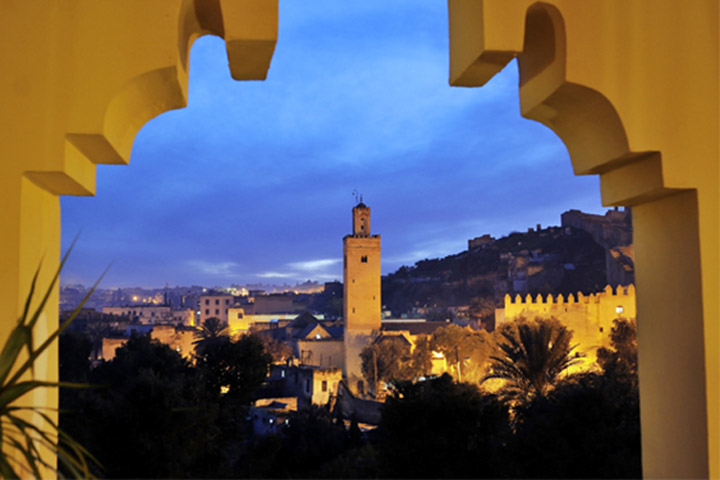Fez, the authentic essence of Moroccan history
- History
- The jewels of Fez – el Bali. The old City
- Culture and tradition
- Crafts in Morocco’s Fez
- Music and art
- Activities
Being a living monument and an open-air museum, Fez is the first of the Moroccan Imperial Cities that concentrates and preserves the true essence of Moroccan history. With the refinement of its palaces, the richness of its museums, the greatness of its madrasas where the greatest sages of the Golden Age were born, the profusion of its mosques as tributes to the greatness of God… all for those who are in love with culture and the arts! Fez is an invitation to constant discovery.

History of Fez
In 789, Idriss 1º traces the limits of the enclosure of the city, “Medinat Fas”. His successor, Idriss IIº in 809 starts to build his royal palace, with its mosque, kissaria, channels and defensive walls. Fez is above all a place carefully chosen by the Idrissid dynasty, who planned it with an intelligent vision of the future. Its geographical location in the rich Saiss plain at the bottom of a small valley at the foot of the Zalagh mountain, makes it a decisive economic, political and strategic crossroads for its development and projection.
From 817-818, two successive waves of settlement greatly influenced the fate of Fez: families expelled from Córdoba by the Umayyads created the Los Andaluces neighborhood and families of Kairouan, fleeing from the Abassides’ persecutions, create the Karaouiyine neighborhood.
The foundation of the Al Karaouiyine university mosque in the year 857 marks the beginning of a golden age for the city.
In consecutive years it welcomes students, merchants, artists and enlightened people from all over the world. Converted into the capital of the empire, it is the preferred refuge of the Andalusian Muslim immigrants and Jews who establish here the mellah (Jewish quarter).
Throughout its exceptional history, Fez has accumulated a rich and diversified architectural and urban heritage. UNESCO declared it a universal heritage of humanity.
The jewels of Fez – el Bali. The old City
The old part of the city of Fez is a true open-air museum with innumerable masterpieces in its 9400 alleys, mosques, madrassas and palaces among the 10572 historic buildings.
The largest mosque is the Karaouiyine, also considered one of the oldest and most important libraries in the world, is in the heart of the city founded in 859. The mosque of Los Andaluces dates from 860 and stands out for its large portico adorned with zelliges and its carved wooden cantilever.
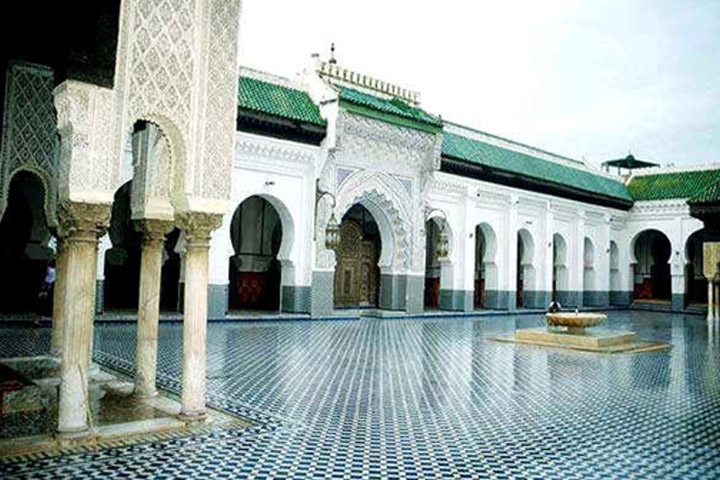
The madrasas (Koranic universities) are a living testimony of the intellectual and scientific past of the city. The Seffarine madrasa is the first founded in the thirteenth century. The Bou Inania madrasa also stands out for its architecture in cedar wood, carved stuccos and marble and onyx decoration.

The El-Attarine madrasa is one of the wonders of Fez, with an extremely fine decoration in sculpted and calligraphic marble.
Along the main axes of the medina we find the fondouks, places where commercial exchanges took place. Among the 70 monumental public fountains, some are true masterpieces of decorative art such as the Nejjarine, the Hayek souk or the Qouas fountain.
Other emblematic places in the city of Fez are the Batha Palace, transformed into the Museum of Arts and Traditions, the Nejjarine Museum of Arts and Crafts of the Wood.
Zaouia Moulay Idriss: The Shrine of the Muslims and the most sacred place in the city

The Chouwara Tannery, A show of Colors and Odors
It consists of pits full of different natural dyes, where the skins of lamb, cow or goat are used for the leather production. The view from above recalls the painters’ color palettes.

The most outstanding places in Fez:
Royal Palace: It is the main monument of Fez Jedid, whose construction began in the thirteenth century. The wide esplanade of the Alawites offers an impressive view over the finely carved doors of the Palace.
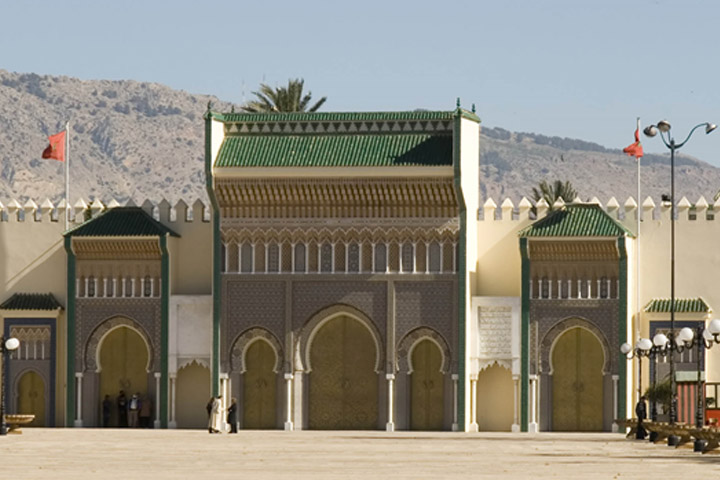
The Mellah: Jewish quarter founded after the sixteenth century by the Sultan to protect the Jewish community. It crosses the big street, artery that gathers all kinds of businesses. The houses of the Mellah stand out for their windows and balconies of wood and wrought iron. The Ibn Danan synagogue is a masterpiece of the Judeo-Moroccan architectural heritage.
The open circuit of Fez Jedid: A walk with exceptional views over the city, its terraces and minerets: the Borj Nord, current Weapons Museum, the Merinies Tombs, the Borj Sud from where you can see the medina. The Tombs of the Merinies are located on the hill of Al Qolla.
The palaces become places of fairytale with carved wood, stucco, arcades topped with stalactites, wrought iron … Each with a fountain in the center, an Andalusian or interior garden. Highlights include Glaoui Palace, Mokri Palace and Mnebhi Palace.
Culture and tradition
In Fez the culture of well-being is omnipresent with its hammams, spas, thermal springs and the magical universe of the oriental dream. Everything seems to be a ritual of cleanliness and beauty, inheritance of ancient customs.
The exquisiteness is not only appreciated in the places of body care but also in its gastronomy. Among others, it is reflected in the fact of combining sweet and salty using all kinds of spices and condiments.
La Mrouzia is the great success of the fasí gastronomy, using the Ras El Hanout, a mixture of spices very peculiar to the Moroccan tradition.
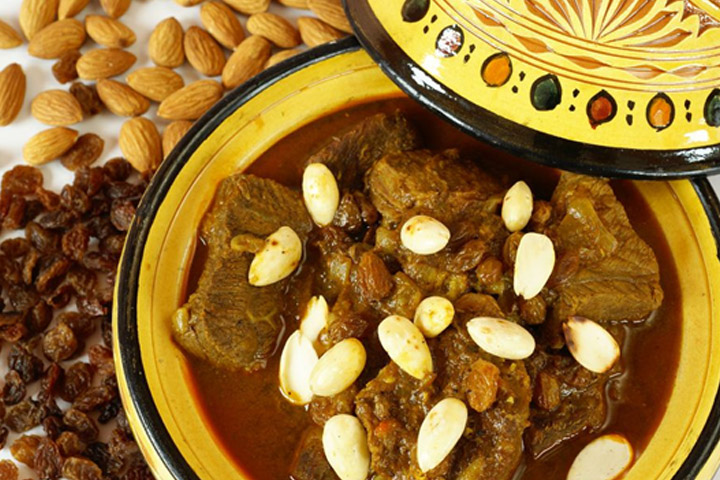
The Crafts of Fez: quality of refinement
The essence of the craftsmanship lies in the fundamental principles that the fasí craftsman never loses sight of: love for work well done, nobility of the chosen materials, master of know-how.
Enameled pottery plays a fundamental role in craftsmanship since the 11th century. Cobalt blue is a hallmark of Fez pottery. To get this blue color the artisans mix different proportions that they keep secret so that it is unique.
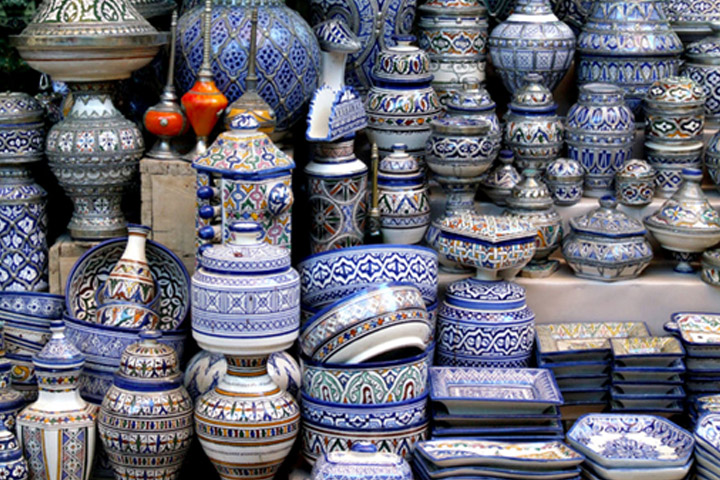
The double-sided knit embroidery is a particularity of Fez. It is a technique completely handmade by embroiderers.
Art and music
The festivals celebrated in Fez for several decades are numerous and of recognized prestige. The Festival of Sacred Music of the World and the Encounters of Fez has been considered one of the world’s most important music festivals worldwide. Among the festivals everyone will find something for themselves: The Jazz Festival in Riads in the palaces and residences of the medina or the Culinary Arts Festival, an unprecedented event in Morocco that invites all the cuisines of the world to express themselves with Moroccan cuisine.
Activities and sports in Fez
The city offers many attraction for all tastes so lovers of sports and the outdoors will find their place here. The Royal Golf of Fez is 15 km away along the road of Immouzzer, with the tops of the Middle Atlas as a backdrop. With its club house and bar-restaurant it is considered one of the most beautiful golf courses in Morocco. Academia Henri Laconte aims to be a platform of the Royal Tennis Club to discover the champions on the grass. At Ain Amyer Equestrian Center you can give riding lessons, walk, great crossings.

